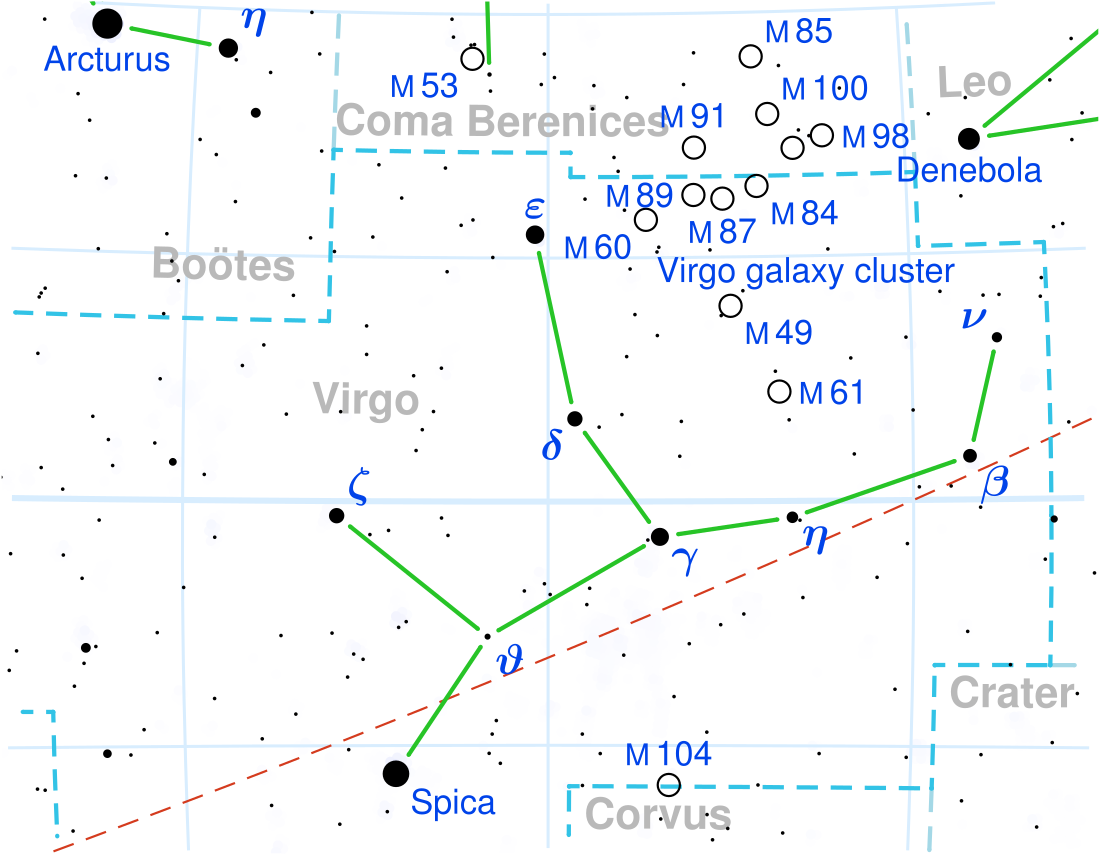Top Qs
Timeline
Chat
Perspective
Theta Virginis
Multiple star system in the constellation of Virgo From Wikipedia, the free encyclopedia
Remove ads
Theta Virginis (θ Vir, θ Virginis) is a multiple star system in the zodiac constellation of Virgo. Based upon parallax measurements, it is about 320 light years from the Sun. The three[10] stars in this system have a combined apparent visual magnitude of 4.37,[2] bright enough to be seen with the naked eye.
The primary component, Theta Virginis Aa, is a white-hued A-type main sequence star with a stellar classification of A1Vs.[4] It is part of a spectroscopic binary[11] which components, Aa and Ab, have visual magnitudes of +4.49 and +6.83 respectively. The system has an orbital period of about 33.04 years with an eccentricity of 0.9.[3] The brighter member of this pair shows photometric and radial velocity periodicities with a cycle time of 0.7 days, which may indicate its rotation period.[12]
The inner pair is orbited by the 9.4 magnitude B component, at an angular separation of 7.1 arcseconds. A fourth component C, 69.6 arcseconds away, has an apparent magnitude of 10.4.[3] However, component C is an optical companion: it is physically unrelated and only appears close in the sky.[10]
On 11 November 2028 and again 11 November 2036, it will have close conjunctions with Venus.[13]: 167
Remove ads
References
External links
Wikiwand - on
Seamless Wikipedia browsing. On steroids.
Remove ads

